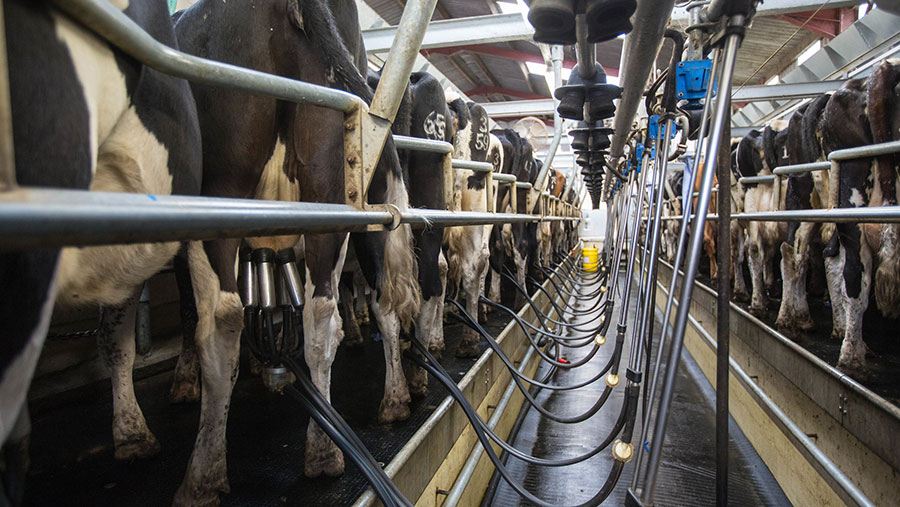Business Clinic: How best to use capital tax allowances
 © Tim Scrivener
© Tim Scrivener Whether you have a legal, tax, insurance, management or land issue, Farmers Weekly’s Business Clinic experts can help.
In this article, Peter Griffiths, tax director at Hazlewoods, offers advice on how to make efficient use of capital allowances for investment in new equipment.
Q Myself, my wife and our two sons are partners in a farming business.
We also have a limited company that carries out contracting work both for the partnership and third parties. We are planning to purchase new equipment for both businesses in 2017.
What do we need to consider to maximise capital allowances on the new equipment in the 2017 accounting year?
A An annual investment allowance (AIA) of up to £200,000 will be available for eligible expenditure by each business for each accounting year. This means that up to £200,000 of eligible expenditure can be set against business income in the year the expenditure is incurred. AIA is not available on cars.
 Peter Griffiths, tax director, Hazlewoods
Peter Griffiths, tax director, HazlewoodsIf eligible expenditure by either business exceeds £200,000, a writing down allowance (WDA) of 18% will be available on the excess for that business.
The WDA reduces to 8% if the equipment is regarded as part of a building, for example, a ventilation system. These are usually referred to as integral features.
See also: Tax implications of building farmyard housing
The equipment will need to be purchased before the 2017 accounting year end of each business for capital allowances to be available in the 2017 accounting year. The 5 April tax year end for individuals is not a relevant deadline, unless of course this is also the accounting year end.
Relevant date of purchase of equipment for capital allowances
If an asset is being purchased outright, with no finance, the acquisition date for tax purposes is the date that the invoice is issued. However, extended payment terms cannot be available.
If there is a gap of more than four months between the invoice date and the date on which payment is required to be made, the expenditure is not treated as incurred until the date on which payment is required to be made.
If an asset is being acquired with hire purchase, the acquisition date for tax purposes is the date that the asset is brought into use.
Therefore, for agricultural machinery, the machinery must have been delivered before the year end for a tax deduction to be obtained. Additionally, the hire purchase must be on “normal” payment terms.
For example, an arable business with a 30 April year end that acquires a new combine wholly on hire purchase in April 2017, which will not be used until August 2017, will not obtain capital allowances on the combine until the April 2018 year end, because the machine was not in use before the April 2017 year end. Any cash paid or part exchange amount will receive tax relief in the 2017 accounting year.
What entities do not qualify for AIA?
AIA is not available to a partnership where non-individuals are partners. Therefore, a partnership that has a company as one of its partners or which includes a trust as a partner, will not qualify for AIA.
Such partnerships are not uncommon, because corporate partners have been used for income tax planning and trustees included as partners in order to maximise Inheritance Tax reliefs.
However, if capital expenditure is incurred by a company that is a corporate partner or a trust that is a partner, these entities may qualify for AIA in their own right.
Maximising capital allowance claims
Claiming capital allowances as early as possible by maximising the AIA will normally only be a timing benefit, because the allowances will be available to claim at a later date if the AIA is not claimed.
However, the new five-year farmers’ averaging for individuals could allow additional tax to be refunded as a result of making capital allowances claims as early as possible.
It is even more important to ensure that available capital allowances are maximised and not missed in claims.
This is particularly relevant for new buildings and new equipment in buildings, for example a milking parlour building or grain drier. It is essential that all integral features’ expenditure eligible for capital allowances is identified – this can qualify for AIA within the £200,000 limit and will attract the WDA at 8% after that.
This makes it very important to obtain detailed quotes and invoices so that these amounts can be identified and claimed.
Do you have a question for the panel?

Outline your legal, tax, finance, insurance or farm management question in no more than 350 words and Farmers Weekly will put it to a member of the panel. Please give as much information as possible.
Send your enquiry to Business Clinic, Farmers Weekly, RBI, Quadrant House, The Quadrant, Sutton, Surrey SM2 5AS.
You can also email your question to fwbusinessclinic@rbi.co.uk.
